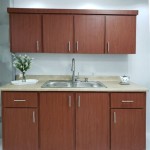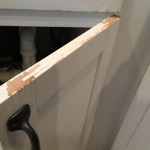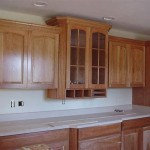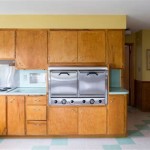The Ultimate Guide to Crafting an Effective Kitchen Cabinet Cleaner Recipe
Maintaining a pristine kitchen is an indispensable aspect of any home care routine. Among the myriad surfaces that demand regular attention, kitchen cabinets stand out for their constant exposure to spills, splatters, and grime. To ensure their longevity and aesthetic appeal, it is essential to employ a tailored cleaning solution that can effectively remove dirt without damaging the delicate finishes.
Choosing the Right Ingredients
The key to a successful kitchen cabinet cleaner recipe lies in selecting the appropriate ingredients. While there are numerous commercial products available, DIY solutions often offer a cost-effective and customizable alternative. Here are some effective and readily available ingredients to consider:
- White Vinegar: A natural disinfectant and degreaser, vinegar effectively cuts through grease and grime, leaving surfaces sparkling and odor-free.
- Baking Soda: A mild abrasive, baking soda helps remove stubborn stains and neutralizes unpleasant odors.
- Lemon Juice: Rich in citric acid, lemon juice boasts disinfecting and brightening properties, leaving cabinets with a fresh and zesty aroma.
- Olive Oil: When added in small quantities, olive oil acts as a natural wood conditioner, protecting and nourishing cabinet surfaces.
Crafting the Recipe
Once the ingredients have been selected, it is time to craft the cleaner. Begin by mixing equal parts white vinegar and water in a spray bottle. To this solution, add a tablespoon of baking soda and a few drops of lemon juice. For an extra touch of nourishment, add a teaspoon of olive oil. Shake the bottle vigorously to combine the ingredients thoroughly.
Application and Maintenance
For optimal results, apply the cleaner to a clean microfiber cloth or directly spray it onto the cabinet surface. Wipe gently in the direction of the wood grain to avoid damaging the finish. Avoid soaking the cabinets, as excessive moisture can penetrate the wood and cause damage. Rinse the surface with a damp cloth to remove any residue and allow it to dry completely before storing items. Repeat the cleaning process regularly to maintain the freshness and longevity of your kitchen cabinets.
Safety Precautions
While DIY cabinet cleaners are generally safe, it is crucial to exercise caution when using certain ingredients. Always wear gloves to protect your hands from irritation. Avoid using harsh chemicals or abrasive cleaners, as these can damage the cabinet surfaces. Test the cleaner on an inconspicuous area before applying it to the entire cabinet to ensure compatibility.
Additional Tips
To further enhance the effectiveness of your kitchen cabinet cleaner recipe, consider these additional tips:
- For stubborn stains, apply a paste made from baking soda and water. Allow it to sit for a few minutes before wiping it away.
- Use a soft-bristled brush to remove dust and debris from intricate carvings or moldings.
- Regularly clean cabinet hardware, such as knobs and handles, to prevent the accumulation of dirt and grime.
By carefully following these guidelines, you can effectively craft a kitchen cabinet cleaner recipe that will keep your kitchen cabinets pristine and inviting. Remember to adjust the quantities and ingredients to suit your specific needs and preferences, and always prioritize safety when using any cleaning solution.

How To Clean White Kitchen Cabinets 3 Best Ways Avoid Abbotts At Home

How To Clean Grimy Kitchen Cabinets With 2 Ingredients In 2024 Cleaning Recipes Cleaners Homemade

How To Clean White Kitchen Cabinets 3 Best Ways Avoid Abbotts At Home

5 Expert Ways To Clean Wooden Kitchen Cabinets Everyday Old House

7 Amazingly Easy Diy Cabinet Cleaners Recipe Cleaner Cleaning Cabinets Homemade

How To Clean Kitchen Cabinets And Remove Grease

How To Clean Kitchen Cabinets Everyday Skate

3 Super Easy Ways To Clean White Kitchen Cabinets And Avoid

How To Clean White Kitchen Cabinets 3 Best Ways Avoid Abbotts At Home

3 Easy Diy Ways To Clean Kitchen Cabinets Cabinet Cleaner Recipes
Related Posts








